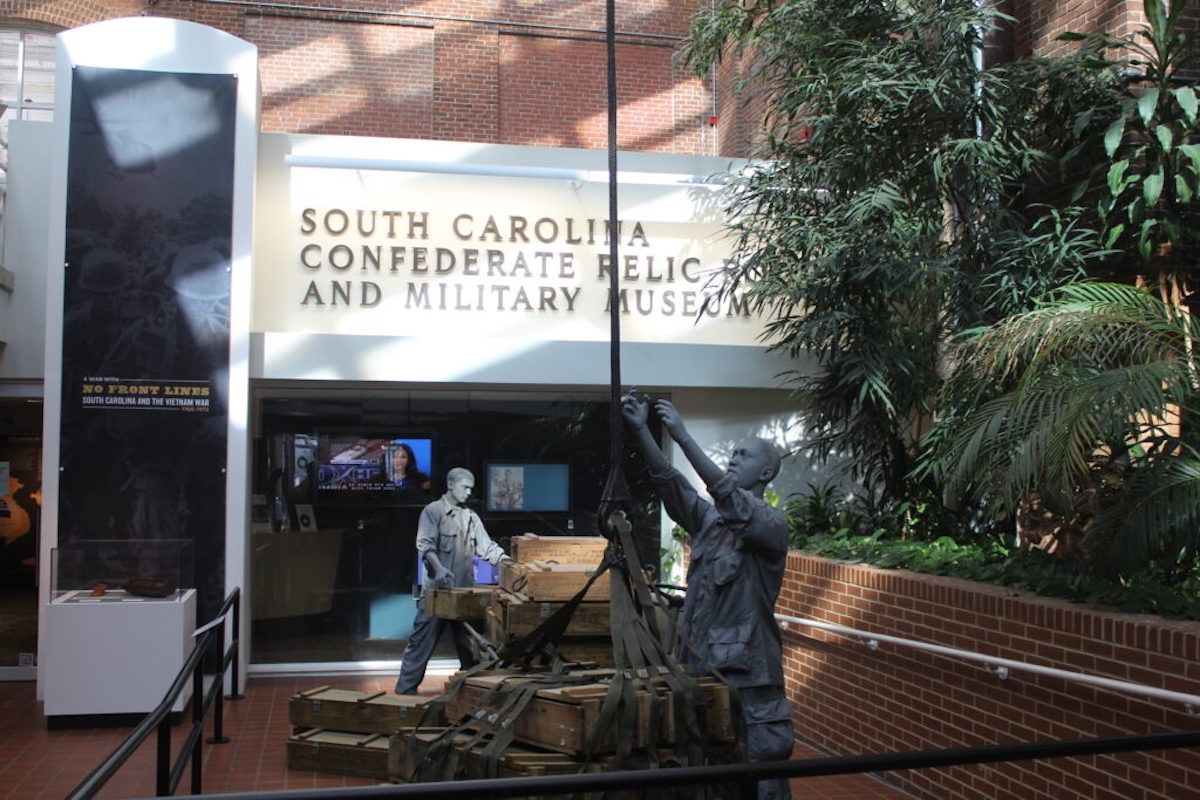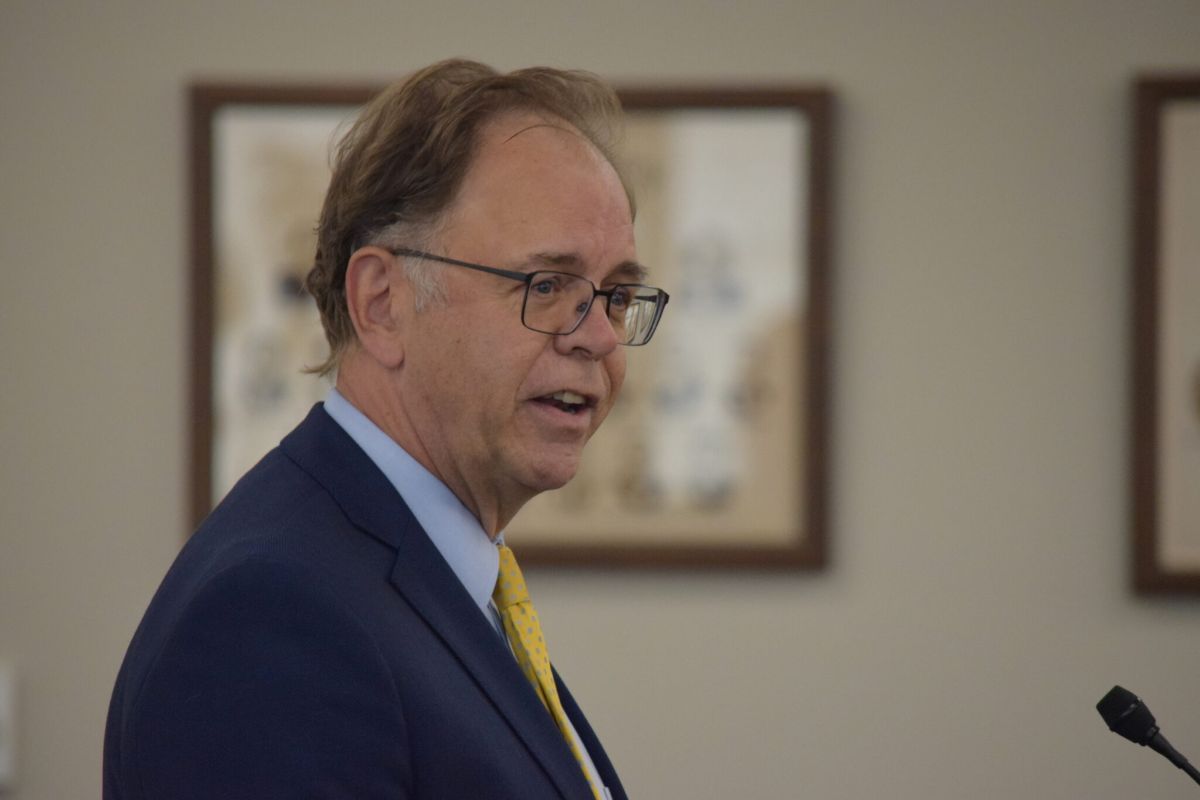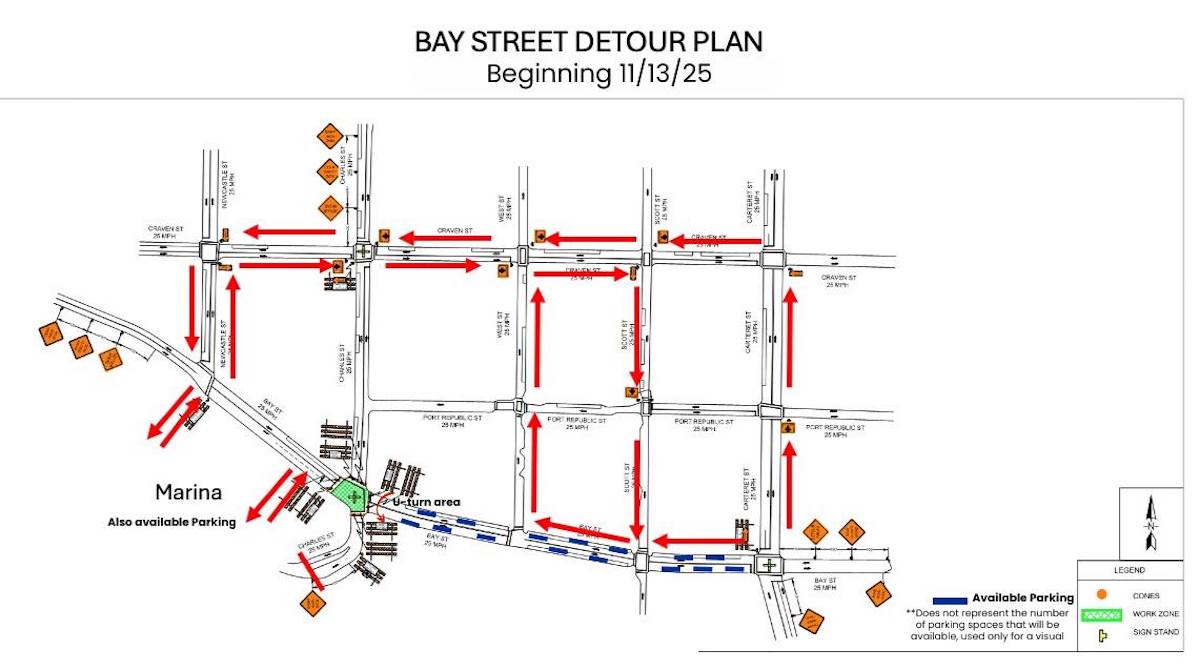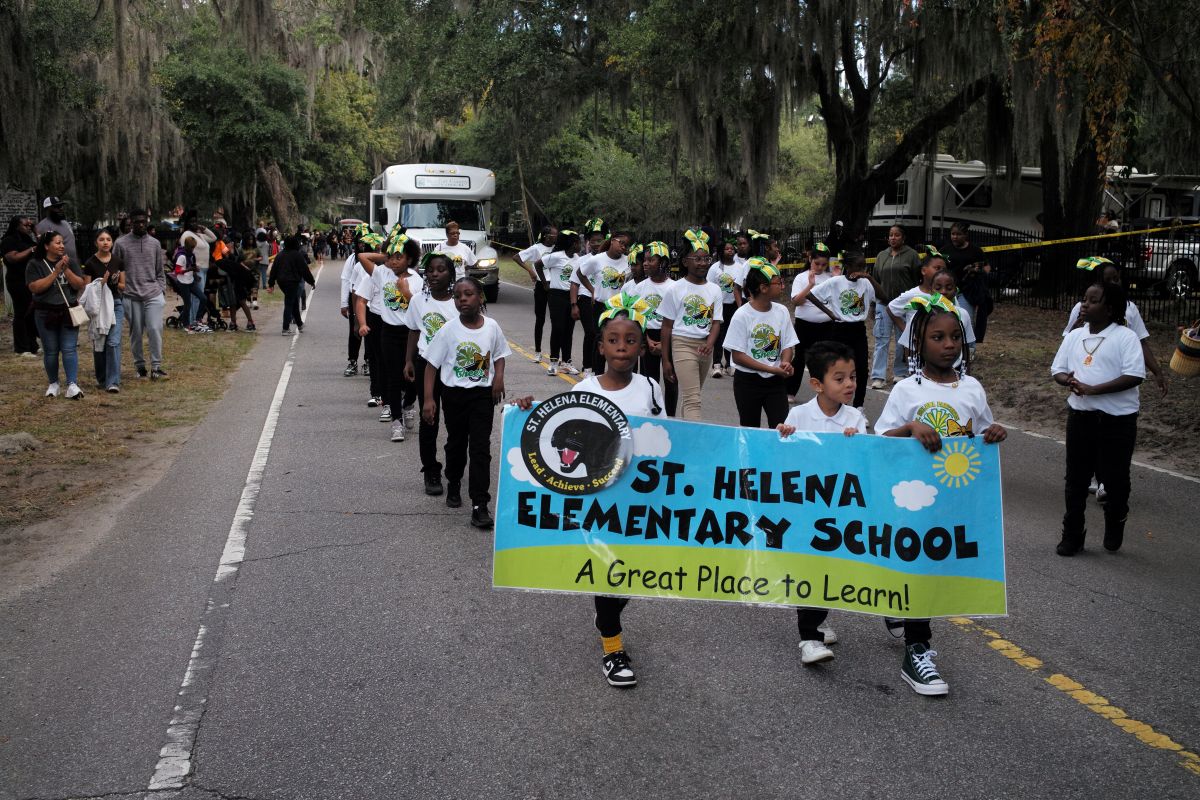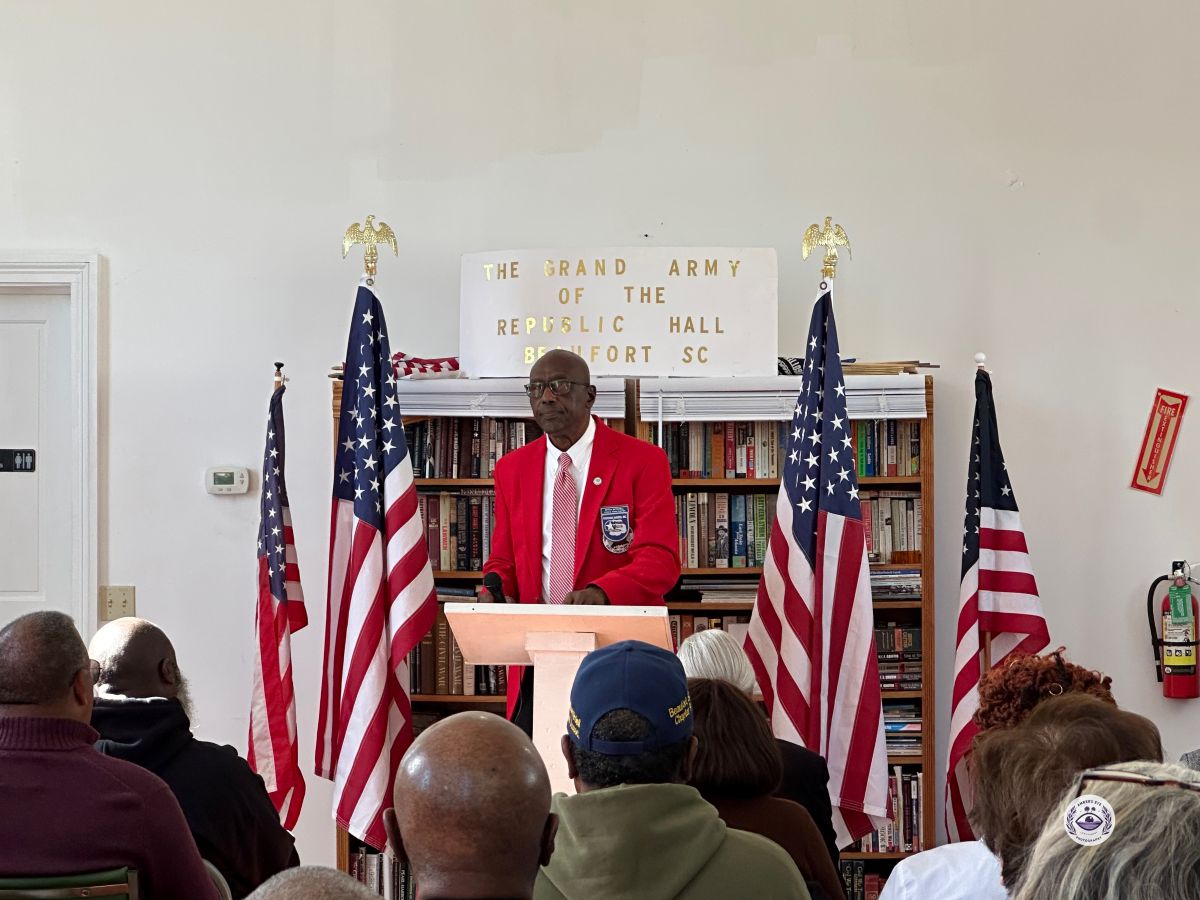After years of controversy, pandemic deterred people from visiting the Confederate Relic Room, its Vietnam exhibit brought in record numbers
By Skylar Laird
SCDailyGazette.com
COLUMBIA
After years caught in a controversy over a Confederate flag it never asked for, followed by a pandemic that closed its doors, South Carolina’s military history museum has rebounded with an exhibit on a war fought a century after the Confederacy lost.
More people visited the Confederate Relic Room and Military Museum in the fiscal year that ended June 30 than any other year since at least 2002, when Columbia’s oldest museum moved into its home in the same building as the South Carolina State Museum and started tracking attendance.
Museum Director Allen Roberson attributes the surge to the popularity of an exhibit on the Vietnam War, which opened in 2022 after years of delays.
A Confederate controversy
Attendance at the museum had languished for years, partly because of its name, which is actually a misnomer.
Founded in 1896, the Confederate Relic Room — initially housed inside the Statehouse — has artifacts from every war South Carolinians have fought in, starting with the Revolutionary War.
But its name is why, in 2015, legislators sent the museum the last Confederate flag flown by the state on Statehouse grounds. The flag was removed — pole and all — in the wake of the June 2015 massacre at a historic Black church in Charleston by an avowed white supremacist who gunned down nine people.
The museum didn’t request the replica battle flag — a vinyl flag with historical significance but, unlike the museum’s other displayed flags with bullet holes and blood, not a historical artifact. Regardless, the law that took it down required its display. The flag sat in storage for several years as the Legislature rejected all proposals for renovation and display costs. A Charleston legislator even suggested closing the Relic Room for good and sending all its items to other museums.
Amid the debate, the number of visitors in 2015 dropped below 20,000 for the first time in a decade.
The museum worked to recover. But in 2020, it took another hit as the COVID-19 pandemic forced it to close.
Then last year, a long-planned exhibit on the Vietnam War opened.
Between July 2022 and June 2023, the Relic Room logged more than 41,000 visits. That’s an increase of more than 50% over the prior fiscal year, when just over 27,000 people came to the museum, according to its year-end report.
As the Relic Room faces another potential closure for construction in the coming year, museum officials are considering how to sustain the popularity, including extending the Vietnam exhibit’s tenure and introducing several new displays.
But to truly capitalize on the museum’s potential, the Legislature needs to ditch its controversial name, Roberson said.
‘One of our best exhibits’
Inspired by a series of letters a Columbia soldier wrote home while in Vietnam, the museum’s newest exhibit showcases what it was like to fight in that Southeast Asia war. Like other exhibits in the museum, it displays uniforms, weapons, flags and other artifacts from the time.
But the Vietnam exhibit, which occupies one of the museum’s three galleries, goes a step further.
Visitors walk through a tunnel of leaves, mannequins of soldiers hidden around them. A floor-to-ceiling screen shows life-sized silhouettes traipsing through grass, like soldiers on patrol. Kiosks throughout the exhibit show photos and videos from the war, coupled with quotes from the more than 70 interviews museum historians conducted with veterans.
“I think it’s one of our best exhibits — maybe the best thing we’ve ever done,” Roberson said of the exhibit titled “A War with No Front Lines: South Carolina and the Vietnam War, 1965-1973.”
The $775,000 showcase was years in the making.
Initially, it was meant to open in 2019, but a burst pipe flooded the exhibition room. As staff cleaned up the damages, the COVID-19 pandemic once again pushed back the opening date. Then, a visit from the fire department that pointed out problems with the museum’s sprinkler system put it on hold once more.
Meant to commemorate the 50th anniversary of the war, the exhibit has drawn a wide mix of people. Veterans and their families have made up a big portion of the visitors, but the display has also drawn a large number of students, as well as interested people of all kinds, Roberson said.
The exhibit was supposed to close in May, but Roberson said he expects it will remain through the end of 2024, if not longer.
Along with the expected popularity of a new exhibit, especially one from a more recent war, the museum staff has been making a concerted effort to bring more people into the museum.
One way of drawing people to the Relic Room has been through events and programs, Roberson said.
That has included inviting veterans to speak, bringing in historians to talk about significant events, or hosting events, such as SwordFest, a popular event held in February.
The more people who visit the museum for those events, the more come back to walk through the displays, Roberson said.
“Success builds on success,” he told S.C. Daily Gazette.
Coming changes
Just as the museum seems to have hit its stride, it is facing yet another closure.
In June, the atrium in the historic Mills Building that houses both the Relic Room and State Museum will close for construction. The construction, expected to last three to four months, will close off the main entrance to the Relic Room.
The museum’s board has yet to decide whether to close to the public during that time. Crews could construct an alternate entrance around the back of the building. But Roberson said he’s doubtful people will find and use it enough to make the effort worthwhile.
Museum staff will likely take the closure as an opportunity to revamp some of the existing Civil War and Revolutionary War exhibits, Roberson said.
A closure could also be a good time to install some new exhibits, Roberson said. For one, he wants to create an exhibit about German prisoners of war kept in South Carolina during World War II. Already on display are a chessboard and clock German soldiers made for the families they lived with during the war. A new exhibit would expand upon those stories.
“I think that’s a great subject matter,” Roberson said.
Also on the docket is a display using the artifacts unearthed when Dominion Energy crews cleaned coal tar from the bottom of the Congaree River over the past two years. When Union forces stormed Columbia during the Civil War, they dumped Confederate arms into the river.
More than 150 years later, cleanup crews extracted more than 100 items, including cannonballs, a saber, and a wagon wheel, from the tar in the riverbed. That display likely won’t be ready for another year or so, since the artifacts are still being preserved after decades underwater.
What’s in a name?
As the Confederate Relic Room looks to its future, much of its success could hinge on changing its name.
Having the word “Confederate” in the name makes courting corporate donations, a significant part of most museums’ budgets, impossible. It also raised eyebrows with the American Alliance of Museums, which inspects the museum for accreditation, Roberson said.
And it turns away potential visitors who think the museum is all about the Confederacy.
On top of that, the name isn’t even accurate, Roberson said.
“Confederate” implies the museum is focused on the Civil War. In reality, he estimates that Civil War artifacts make up less than half the museum’s collection. Even the word “relic” is inaccurate, Roberson said, since a relic suggests an item has historical significance on its own.
Because the museum is a public museum supported by state taxes, changing the name would be up to the Legislature. The museum board has been asking for a new name for years, but legislators have not taken up the issue.
“It’s not up to me,” Roberson said. “But I think it’s going to have to be addressed, because I don’t think (the problem) is going to go away.”
Skylar Laird covers the South Carolina Legislature and criminal justice issues. Originally from Missouri, she previously worked for The Post and Courier’s Columbia bureau.


